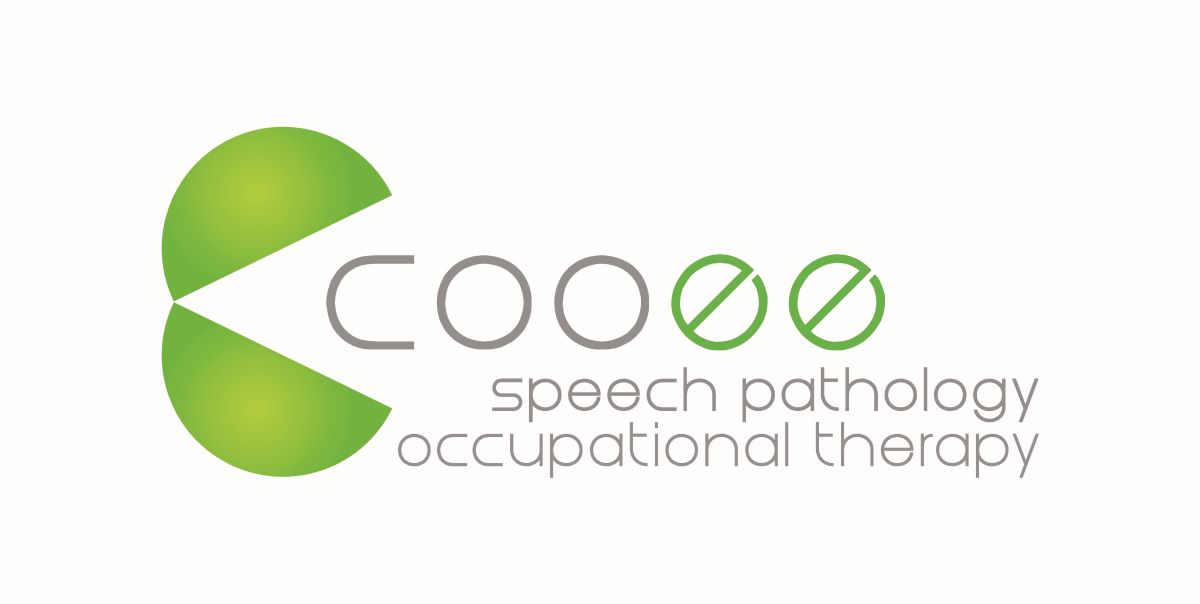Play Based Therapy, & Why It Is So Awesome!
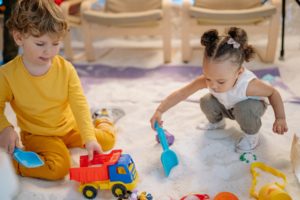 When I began working as a Speech Pathologist, I used to joke that I enjoyed my job as I “just loved to play all day”. However, the “just” is a bit of an understatement. There is so much more to play than stacking blocks and having tea parties.
When I began working as a Speech Pathologist, I used to joke that I enjoyed my job as I “just loved to play all day”. However, the “just” is a bit of an understatement. There is so much more to play than stacking blocks and having tea parties.
What is play based therapy?
Play based therapy is where play is used to target and support a child’s speech, language, social-emotional communication, fluency, voice etc. skills.
Why is this type of therapy effective?
I think this is an important question to answer. If I were a parent looking at my child’s therapist play with them for an entire therapy session, I might be confused as to why they were not using worksheets and flashcards instead. While worksheets and flashcards hold merit in their use, play based therapy is significant for the following reasons:
1. Play based therapy is meaningful and motivating
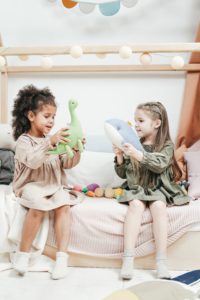 Meaningful – One of a child’s main occupations is to play. Therefore, when therapy targets a child’s skills in play activities, therapy is using a context meaningful to the child. This relatability increases the potential for the child to carry over targeted skills into their everyday environments.
Meaningful – One of a child’s main occupations is to play. Therefore, when therapy targets a child’s skills in play activities, therapy is using a context meaningful to the child. This relatability increases the potential for the child to carry over targeted skills into their everyday environments.- Motivating – Play is fun, interesting and engaging. Increasing a child’s ‘buy-in’ to therapy is a key ingredient in ensuring a child is motivated to engage in therapy tasks, therefore, maximising the efficiency and effectiveness of therapy. For example, if we provide a child with a list of verbs on a worksheet and have them read them aloud, they may learn to say those verbs but have difficulties knowing where or when to use them. On the other hand, if we use a craft activity to target verbs (e.g. cutting, folding, scrunching, sticking, shaking, drawing, giving, taking, helping etc.), we are using a meaningful and motivating activity to help the child understand how and why to use verbs.
2. Play based therapy is child-led
- Taking the lead from the interests of the child enables us to meet the child where they are at, build on their strengths (which is evidence based practice) and explore therapy in a context where they are interested and engaged. By building on a child’s strengths, activities become achievable and motivating, rather than new and discouraging.
3. Play based therapy can happen anywhere, anytime, with anything
- No need for parents to cut out and laminate flashcards, play based therapy is functional and practical.
- Parents don’t need extra materials, with a little imagination, the possibilities of play are endless. An empty water bottle might be a telescope, a microphone or a rolling pin etc.
4. Play based therapy is evidence based practice
- The findings of leading researchers has shown that children learn through meaningful activities such as play.
Myths about Play Based Therapy:
1. Play is just for toddlers.
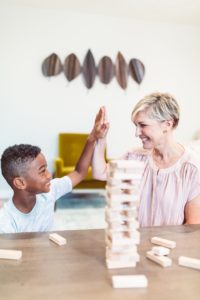 FALSE: children of all ages engage in play. The type of play may look different between a preschool child and a child in Year 5, but it is still play.
FALSE: children of all ages engage in play. The type of play may look different between a preschool child and a child in Year 5, but it is still play.
2. Play based therapy does not elicit enough practice of the goals
FALSE (on two accounts): a) when children are having fun, they are more likely to engage in activities targeting their goals, and b) the skills practiced in play based therapy are meaningful and more likely to carryover into their everyday life.
3. Play based therapy only develops a child’s play skills
FALSE: play can be used to support a wide range of skills such a child’s language, speech, social-emotional communication, fluency, vocal quality, and use and implementation of Augmentative and Alternative Communication (e.g. an iPad with a communication app).
4. Play based therapy has no plan, no structure
FALSE: Therapists have a clear plan of the goals that are being targeted based on comprehensive assessment, and use play as the means to target the child’s goals. Although it may look as though the therapist and child are “only playing”, rest assured, the therapist is targeting a myriad of communication skills in a meaningful and motivating way.
What could play based therapy look like?
Let’s look at an example of how one toy can target multiple goals:
The toy: play food (e.g. plastic vegetables)
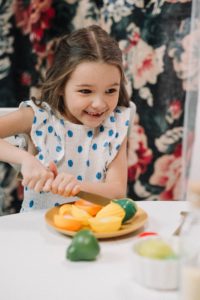 Goals that could be targeted:
Goals that could be targeted:
- Vocabulary: naming different food, cutlery etc. items and portion sizes (e.g. half, whole)
- Verbs: cooking soup – cutting, chopping, making, pouring, stirring, tasting etc.
- Following directions: for example, a request, “I would like a blue cupcake and a pink brownie”
- Spatial concepts: “put the carrot in the pot and the steak on the BBQ”
- Pronouns: “he wants the milk, she wants some tea, let’s give the tea to her”
- Categorisation: sorting fruits versus vegetables
- Sequencing vocabulary: “first, chop the veggies, second, put them in the pot…”
- Problem solving: “I want to order pizza but I don’t have enough money to pay for it. What can I do?”
- Speech sound production: e.g. producing the “k” sound in words such as “cut”, “carrot”, “baking”, “cooking”, “shake” etc.
This week, I encourage you to look around your home and see how so many everyday objects can be used to support your child’s language acquisition and development in a playful, meaningful and motivating way. Give it a go and you’ll understand why I love the aspect of my job where I “just play everyday”.
If you would like to learn more about the play based therapy, please contact our client care team on 3265 4495 or via email at [email protected].
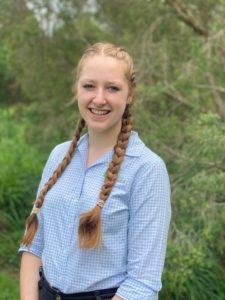
Robbie Corgat
Speech Pathologist
